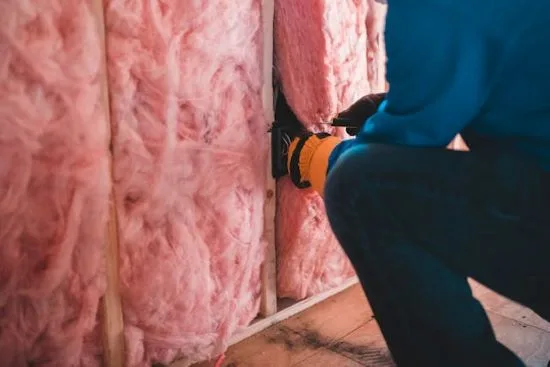Exploring the Versatility of Structural Foam Molding

Structural foam molding stands out in manufacturing as a versatile process for producing high-quality plastic parts. It offers numerous advantages, from automotive components to consumer goods, including lightweight construction, superior strength, and cost-effectiveness. This comprehensive guide outlines the intricacies of structural foam molding, exploring its applications, benefits, and factors contributing to its versatility in various industries.
Understanding Structural Foam Molding
Structural foam molding is a plastic molding process that involves injecting a foaming agent into the polymer melt to create a cellular structure within the finished part. Unlike traditional injection molding, which produces solid parts, structural foam molding produces parts with a cellular core and solid outer skin. This unique structure results in lightweight yet solid and rigid parts. There are many advantages of structural foam molding that make it a preferred choice for manufacturers. Overall, the process typically involves three main steps:
- Injection: The polymer resin, foaming agent, and other additives are heated to a molten state and injected into the mold cavity under high pressure.
- Foaming: Once inside the mold, the foaming agent expands, creating a cellular structure within the part. This cellular core reduces material usage while maintaining structural integrity.
- Cooling and Ejection: The part can cool and solidify within the mold before being ejected, trimmed, and finished as necessary.
Applications of Structural Foam Molding
Structural foam molding finds applications across various industries due to its versatility, strength-to-weight ratio, and cost-effectiveness. Some typical applications include:
- Automotive Components: Structural foam molding produces automotive components such as bumper fascias, instrument panels, door panels, and structural reinforcements. Structural foam parts’ lightweight yet durable nature contributes to fuel efficiency and vehicle performance.
- Industrial Equipment: Structural foam molded parts are used in industrial equipment and machinery, where strength, rigidity, and impact resistance are essential. Components such as housings, enclosures, and equipment panels benefit from structural foam’s lightweight yet robust properties.
- Consumer Goods: Structural foam molding produces consumer goods such as furniture, appliances, and recreational equipment. Chairs, tables, storage bins, and coolers made using structural foam are lightweight, durable, and cost-effective.
- Electronics: Structural foam molded enclosures and housings protect sensitive electronic components from damage due to impact, vibration, and environmental factors. The cellular structure of structural foam provides excellent shock absorption and thermal insulation.
- Packaging: Structural foam molded packaging solutions offer lightweight protection for fragile or sensitive products during shipping and handling. Foam inserts, trays, and packaging components provide cushioning and impact resistance while minimizing material usage and waste.
Benefits of Structural Foam Molding:
The versatility of structural foam molding stems from its numerous benefits, including:
- Lightweight Construction: Structural foam molded parts are lightweight yet vital, making them ideal for applications where weight reduction is critical.
- High Strength-to-Weight Ratio: The cellular structure of structural foam parts provides exceptional strength and rigidity while reducing material usage, resulting in cost savings and improved performance.
- Impact Resistance: Structural foam molded parts offer excellent impact resistance, making them suitable for industrial equipment and consumer goods.
- Design Flexibility: Structural foam molding allows for the production of complex geometries with minimal tooling costs. This design flexibility enables manufacturers to create customized solutions tailored to specific requirements.
- Cost-Effectiveness: Structural foam molding offers cost-effective production of large, complex parts with reduced material usage and shorter cycle times than other molding processes. This cost-efficiency makes it an attractive option for high-volume manufacturing.
- Thermal Insulation: The cellular structure of structural foam provides thermal insulation properties, making it suitable for applications where temperature control is necessary, such as electronics and packaging.
Factors Contributing to Versatility
Several factors contribute to the versatility of structural foam molding:
- Material Selection: Structural foam molding can be performed using a wide range of thermoplastic materials, including polyethylene, polypropylene, ABS, polystyrene, and polyurethane. Each material offers unique properties such as stiffness, impact, and chemical resistance, allowing manufacturers to select the most suitable material for their application.
- Mold Design: The mold design is crucial in structural foam molding. Manufacturers can achieve consistent part quality and dimensional accuracy by optimizing the mold design for flow characteristics, cooling efficiency, and part ejection.
- Process Control: Tight process control ensures uniform foaming and part quality in structural foam molding. Parameters such as temperature, pressure, injection speed, and foaming agent concentration must be carefully monitored and controlled to achieve desired results.
- Tooling Options: Structural foam molding supports various tooling options, including single-cavity, multi-cavity, and family molds. This flexibility allows manufacturers to produce multiple parts in a single molding cycle, reducing production time and costs.
- Secondary Operations: Structural foam molded parts can undergo secondary operations such as machining, assembly, painting, and finishing to meet specific requirements. This versatility allows manufacturers to add value and functionality to the finished parts.
Structural foam molding is a versatile and cost-effective process for producing lightweight yet plastic solid parts across various industries. Structural foam molded parts from automotive components to consumer goods offer exceptional strength-to-weight ratio, impact resistance, and design flexibility.
By leveraging the benefits of structural foam molding and optimizing key factors such as material selection, mold design, and process control, manufacturers can achieve high-quality, customized solutions tailored to their specific requirements. As technology continues to evolve, the versatility of structural foam molding is expected to expand, driving innovation and enabling new applications in diverse industries.


